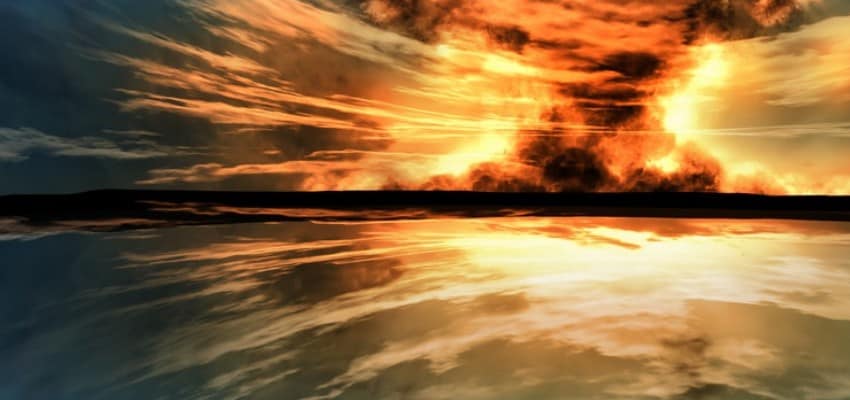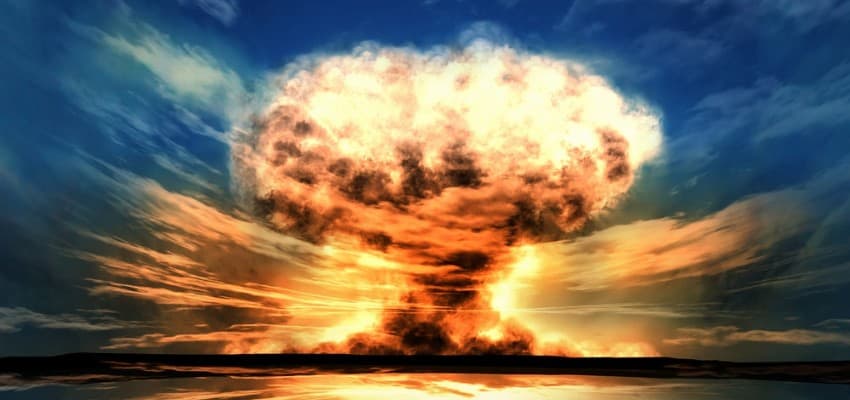|
|
Content Assessment: Nuclear Options? Ukraine Conflict Assessments in Maps (September 17 - 21, 2022)
Information - 95%
Insight - 96%
Relevance - 93%
Objectivity - 93%
Authority - 96%
95%
Excellent
A short percentage-based assessment of the qualitative benefit of the post highlighting the recent Ukraine conflict assessments in maps from the Institute for the Study of War.
Editor’s Note: One of the most accurate and detailed sources for ongoing updates on the Ukraine crisis is the Ukraine Conflict Update from the Institute for the Study of War. The Institute for the Study of War (ISW) is a 501(c)(3) organization and produces strictly non-partisan, non-ideological, fact-based research. ISW seeks to promote an informed understanding of war and military affairs through comprehensive, independent, and accessible open-source research and analysis. ISW’s research is made available to the general public, military practitioners, policymakers, and media members. Providing a daily synthesis of key events related to the Russian aggression against Ukraine, ISW updates may benefit cybersecurity, information governance, and legal discovery professionals as they follow the business, information technology, and legal trends and trajectories impacted by and stemming from the current Ukraine conflict.
Assessment and Maps*
Ukraine Conflict Assessments – An Overview in Maps
- Institute for the Study of War (ISW), Russia Team
- Critical Threats Project (CTP), American Enterprise Institute
General Assessment Background Info
- ISW systematically publishes Russian campaign assessments that include maps highlighting the assessed control of terrain in Ukraine and main Russian maneuver axes.
- These maps augment daily synthetic products that cover key events related to renewed Russian aggression against Ukraine.
The Russian Offensive Campaign Assessments
- September 21, 2022
- By Karolina Hird, Kateryna Stepanenko, Grace Mappes, Mason Clark, Kat Lawlor, and Frederick W. Kagan
Key Development
- Russian President Vladimir Putin’s announcement of “partial mobilization” on September 21 reflected many problems Russia faces in its faltering invasion of Ukraine that Moscow is unlikely to be able to resolve in the coming months. Putin also emphatically did not say that the Russian nuclear umbrella would cover annexed areas of Ukraine nor did he tie mobilization to the annexation.
Key Takeaways
- Russian President Vladimir Putin’s announced “partial mobilization” will not materially affect the course of the war in the coming months.
- Putin did not explicitly threaten to use nuclear weapons if Ukraine continues counter-offensive operations to liberate occupied areas after Russian annexation.
- Ukrainian forces likely continued offensive operations around Lyman.
- Ukrainian forces conducted strikes north and east of Kherson City as part of an operational-level interdiction campaign against Russian logistics, military, and transportation assets in Kherson Oblast.
- Ukrainian and Russian sources identified three areas of kinetic activity on September 21: northwest of Kherson City, near the Ukrainian bridgehead over the Inhulets River, and south of the Kherson-Dnipropetrovsk Oblast border around Vysokopillya.
- Russian federal subjects (regions) are continuing crypto-mobilization efforts regardless of Russian President Vladimir Putin’s declaration of partial mobilization.
- Russian-appointed occupation administrators are likely increasing law enforcement and filtration measures in occupied areas of Ukraine in preparation for Russia’s sham annexation referenda.
- September 20, 2022
- By Katherine Lawlor, Karolina Hird, George Barros, and Frederick W. Kagan
Key Development
- Russian-appointed occupation officials in Luhansk, Donetsk, Kherson, and Zaporizhia oblasts announced on September 20 that they will hold a “referendum” on acceding to Russia, with a vote taking place from September 23-27.
Key Takeaways
- Russian-appointed occupation officials in Luhansk, Donetsk, Kherson, and Zaporizhia oblasts announced on September 20 that they will hold a “referendum” on acceding to Russia, with a vote taking place from September 23-27.
- The Kremlin’s annexation plans are primarily targeting a domestic audience; Putin likely intends to improve Russian force generation capabilities by calling on the Russian people to volunteer for a war ostensibly to defend newly-claimed Russian territory.
- Ukrainian forces continued disrupting ongoing Russian efforts to reestablish ground lines of communications (GLOCs) across the Dnipro River in Kherson Oblast.
- Russian forces are likely targeting Ukrainian hydrotechnical infrastructure in Kharkiv and Luhansk oblasts to threaten Ukrainian positions along the Siverskyi Donets River.
- Russian forces conducted ground attacks in Donetsk Oblast on September 20.
- Russian forces did not conduct any confirmed ground attacks west of Hulyaipole on September 20 and continued routine artillery strikes throughout Zaporizhia Oblast.
- Russian forces continue to degrade their force generation capabilities by cannibalizing training elements to fight in combat formations in Ukraine.
- September 19, 2022
- By Karolina Hird, Katherine Lawlor, Mason Clark, and Frederick W. Kagan
Key Development
- Urgent discussion on September 19 among Russia’s proxies of the need for Russia to immediately annex Luhansk and Donetsk oblasts (much of the latter of which is not under Russian control) suggests that Ukraine’s ongoing northern counter-offensive is panicking proxy forces and some Kremlin decision-makers.
Key Takeaways
- Urgent discussion on September 19 among Russia’s proxies of the need for Russia to immediately annex Luhansk and Donetsk oblasts (much of the latter of which are not under Russian control) suggests that Ukraine’s ongoing northern counter-offensive is panicking proxy forces and some Kremlin decision-makers.
- Ukrainian counter-offensive successes are degrading morale among Russian units that were regarded as elite prior to the invasion of Ukraine.
- Ukrainian forces are likely continuing limited and localized offensive operations across the Oskil River and along the Lyman-Yampil-Bilohorivka line.
- Russian forces continued ground attacks south of Bakhmut.
- Ukrainian forces are continuing to strike Russian military, transportation, and logistics assets in Kherson Oblast.
- Ukrainian and Russian sources identified three areas of kinetic activity on September 19: northwest of Kherson City, near the Ukrainian bridgehead over the Inhulets River, and in northern Kherson Oblast near Olhine.
- The size of volunteer units Russia can generate is likely decreasing.
- September 18, 2022
- Kateryna Stepanenko, Karolina Hird, Katherine Lawlor, George Barros, and Frederick W. Kagan
Key Development
- Russian President Vladimir Putin is increasingly relying on irregular volunteer and proxy forces rather than conventional units and formations of the Russian Federation Armed Forces.
Key Takeaways
- Russian President Vladimir Putin appears to be increasingly relying on irregular, poorly trained ad-hoc volunteer and proxy units rather than attempting to rebuild damaged or destroyed conventional Russian ground forces units.
- Ukrainian forces continue to consolidate positions on the east bank of the Oskil River in Kharkiv Oblast despite Russian efforts to contain them.
- Russian forces in western Kherson Oblast may be attempting to fall back to more defensible positions in a controlled withdrawal to avoid the chaotic retreat that characterized the collapse of Russian defenses in Kharkiv earlier in September.
- Russian forces suffered devastating losses of manpower and equipment in their fight for eastern Ukraine and especially during the Ukrainian Kharkiv counter-offensive. Multiple Russian armored and mechanized units have likely been effectively destroyed according to assessments released on September 18.
- September 17, 2022
- By Kateryna Stepanenko, Grace Mappes, Angela Howard, and Frederick W. Kagan
Key Development
- Russian forces continue to conduct meaningless offensive operations around Donetsk City and Bakhmut instead of focusing on defending against Ukrainian counteroffensives that continue to advance.
Key Takeaways
- Russian forces continue to prioritize strategically meaningless offensive operations around Donetsk City and Bakhmut over defending against continued Ukrainian counter-offensive operations in Kharkiv Oblast.
- Ukrainian forces liberated a settlement southwest of Lyman and are likely continuing to expand their positions in the area.
- Ukrainian forces continued to conduct an interdiction campaign in Kherson Oblast.
- Russian forces continued to conduct unsuccessful assaults around Bakhmut and Avdiivka.
- Ukrainian sources reported extensive partisan attacks on Russian military assets and logistics in southern Zaporizhia Oblast.
- Russian officials continued to undertake crypto-mobilization measures to generate forces for war Russian war efforts.
- Russian authorities are working to place 125 “orphan” Ukrainian children from occupied Donetsk Oblast with Russian families.
We do not report in detail on Russian war crimes because those activities are well-covered in Western media and do not directly affect the military operations we are assessing and forecasting. We will continue to evaluate and report on the effects of these criminal activities on the Ukrainian military and population and specifically on combat in Ukrainian urban areas. We utterly condemn these Russian violations of the laws of armed conflict, Geneva Conventions, and humanity even though we do not describe them in these reports.
Chronology of Maps from September 17 – 21, 2022 – Mouseover to Scroll
Ukraine Conflict Maps - 091722-092122See the Institute for the Study of War Interactive Map of the Russian Invasion
Read the latest Ukraine Conflict updates from the Institute for the Study of War
* Shared with direct express permission from the Institute for the Study of War (ISW).
About the Institute for the Study of War Research Methodology
ISW’s research methodology relies on both primary and secondary sources, enabling researchers to develop a comprehensive understanding of the situation on the ground. In order to analyze military and political developments in any given area, ISW’s research analysts must wholly understand the systems of enemy and friendly forces. They must also understand the population demographics, physical terrain, politics, and history of that area. This lays the analytical foundation for understanding the reasons for particular developments and fulfilling their assigned research objectives. ISW analysts also spend time in places like Iraq, Afghanistan, and elsewhere in order to gain a better understanding of the security and political situation and to evaluate the implementation of current strategies and policies. Our researchers compile data and analyze trends, producing a granular analysis of developments in areas of research, producing an accurate, high-resolution, timely, and thorough picture of the situation. ISW’s research methodology guarantees its success and commitment to improving the nation’s ability to execute military operations, achieve strategic objectives, and respond to emerging problems that may require the use of American military power.
About the Institute for the Study of War
The Institute for the Study of War advances an informed understanding of military affairs through reliable research, trusted analysis, and innovative education. We are committed to improving the nation’s ability to execute military operations and respond to emerging threats in order to achieve U.S. strategic objectives. ISW is a non-partisan, non-profit, public policy research organization.
Learn more, get involved, and contribute today.
Additional Reading
- [Annual Update] International Cyber Law in Practice: Interactive Toolkit
- Data Embassies: Sovereignty, Security, and Continuity for Nation-States
Source: ComplexDiscovery
























